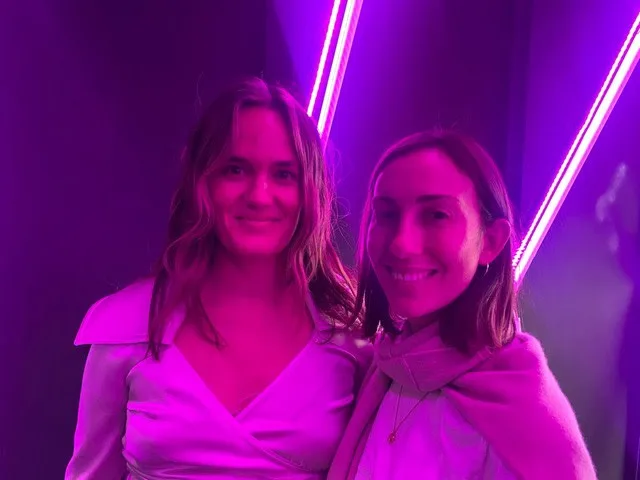
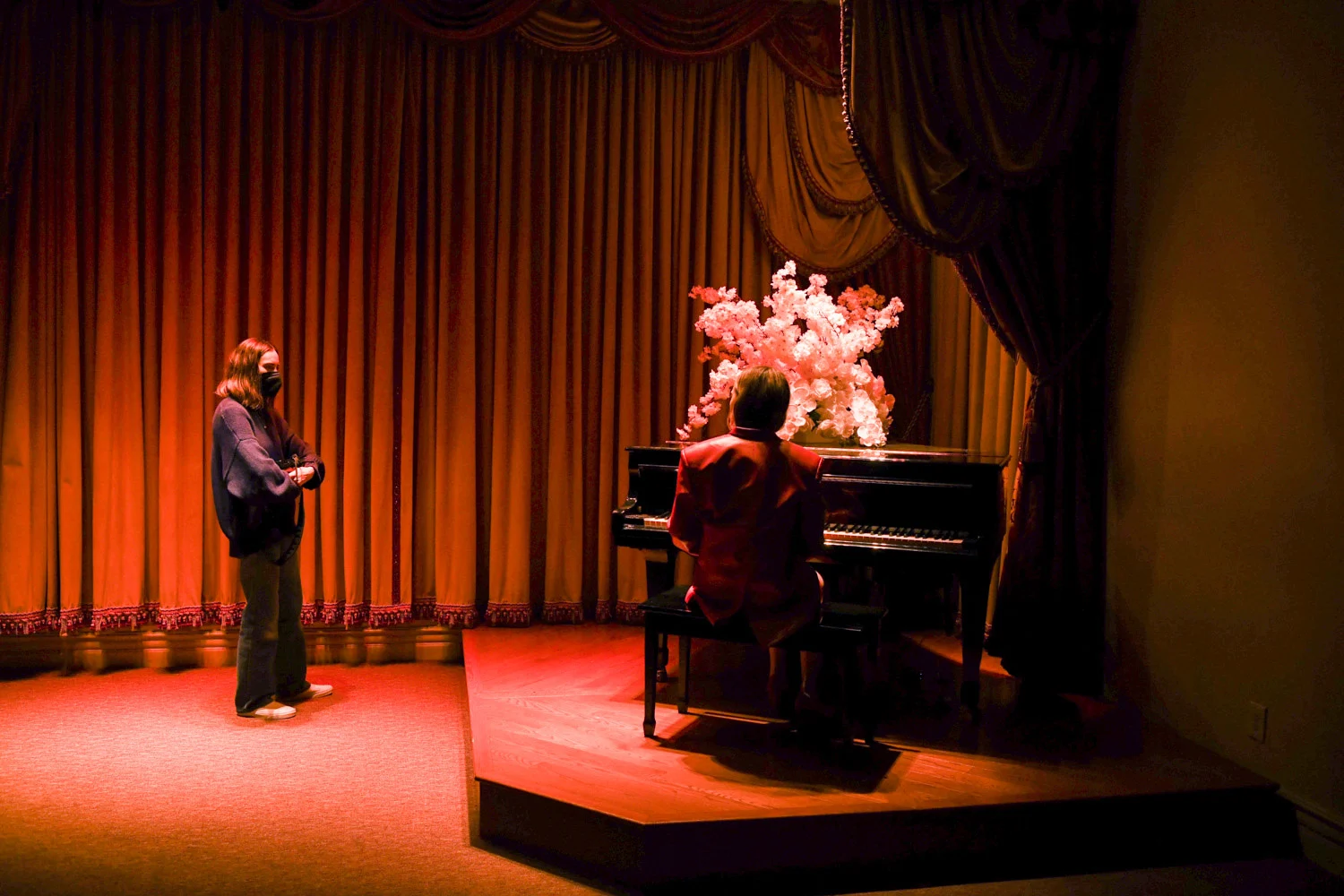
Last year, director Gia Coppola collaborated with friend Kelly Zutrau from the band Wet to create a series of videos with musicians such as Toro y Moi's Chaz Bear, Buddy Ross and Dev Hynes, to celebrate the release of their third album Letter Blue.
WePresent supported the creation of Larabar, “a cinematic and intimate live performance” of the track, directed by Gia Coppola. Here, Claire Marie Healy speaks to Gia and Kelly about their friendship, collaboration and inspiration for the films.
Photos by Lindsay Ellary.
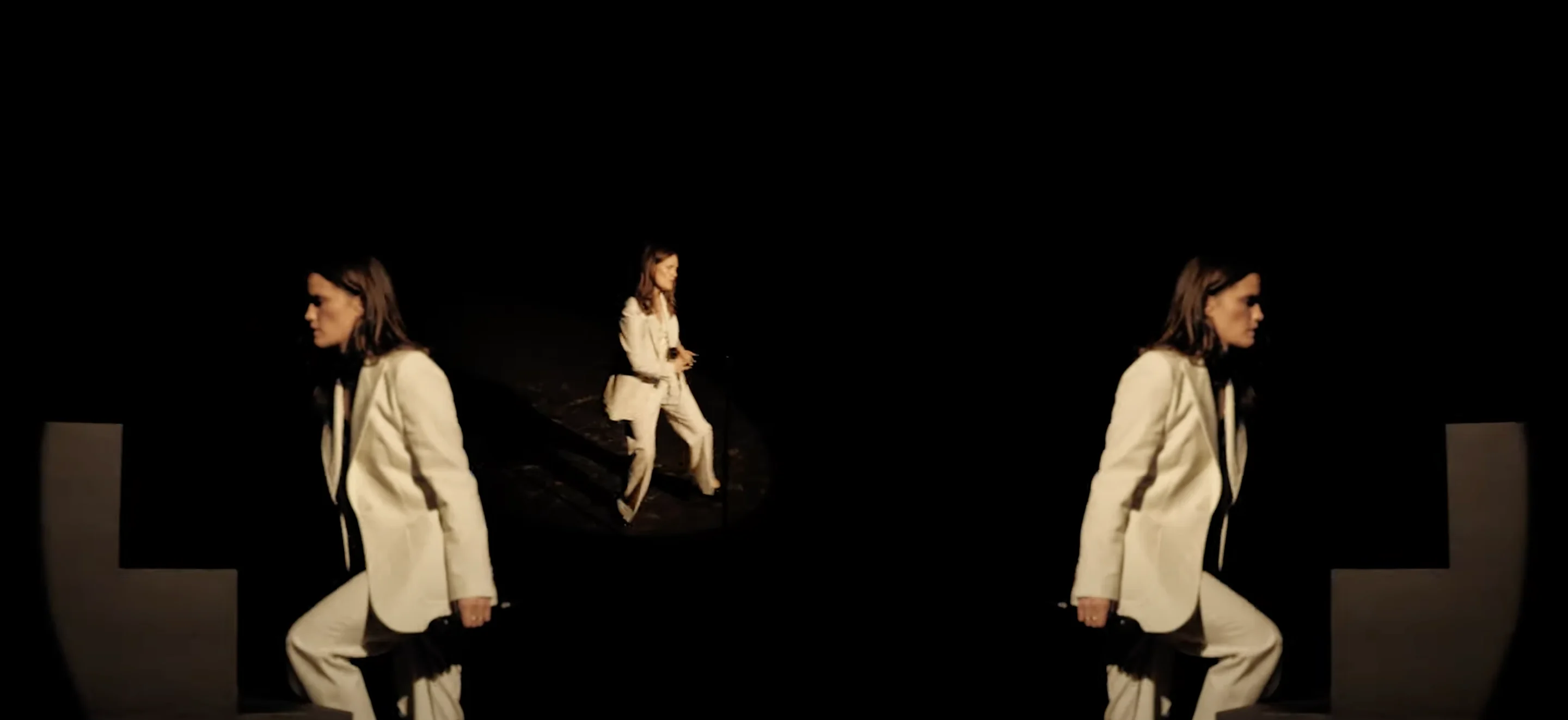
For two artists with tastefully un-fussed public presences, musician Kelly Zutrau and director Gia Coppola have spent much of 2021 embracing the thrill of extreme personas. For Kelly, a painter and singer who plays with the band Wet, alongside multi-instrumentalist Joe Valle, the Fall brings the release of a third album, Letter Blue; for Gia, her internet-fueled sophomore feature, Mainstream, was released earlier in the summer. But after admiring one another from their respective corners, Kelly and Gia have creatively paired up for the video of Wet’s forthcoming single Larabar. Out today via WePresent, the project is two women’s creative response to the frustration of the year they spent in relative isolation—and a mutual desire to feel the thrill of pure performance once again.
In the video, which sees an ivory-suited Kelly and her band perform to an empty crowd in a theater, a series of dream-like dance motifs—centered on the singer’s sweetly balletic movements—rise to a crescendo that feels like an exhale. But as surrealistic as the final product might be, the idea behind Larabar is grounded in the difficult fact of a year devoid of live music, and a period where we have been denied the potent feeling of being in a crowd.
The film’s alternately flowing and frozen choreography has given Kelly a new energy for playing shows again; dialing in from New York, she says the experience has made her excited to “focus more on getting into a character” on tour. For Gia’s part—she’s at home in L.A., accompanied by her cat who occasionally meows in the background—she admits that it’s the discomfort of the press cycle around her art that makes her want to create a character of her own, simply to get through it. You need only watch Andrew Garfield throw himself around a stage as a deranged, glitter-dipped YouTube star in Mainstream to see the parallels between Gia’s last feature and her latest music video—joining the two, is the director’s recognition of an increased blurring of lines between classical performance and the beautiful spectacles of the smartphone era.
Fittingly, since our conversation, Wet have been building to their album release with a series of track videos cut from found TikTok and YouTube clips, including for Larabar. They’re kind of like the locked-down, extremely online version of the band’s new era—an opening act for the cathartic release of a more traditional stage.
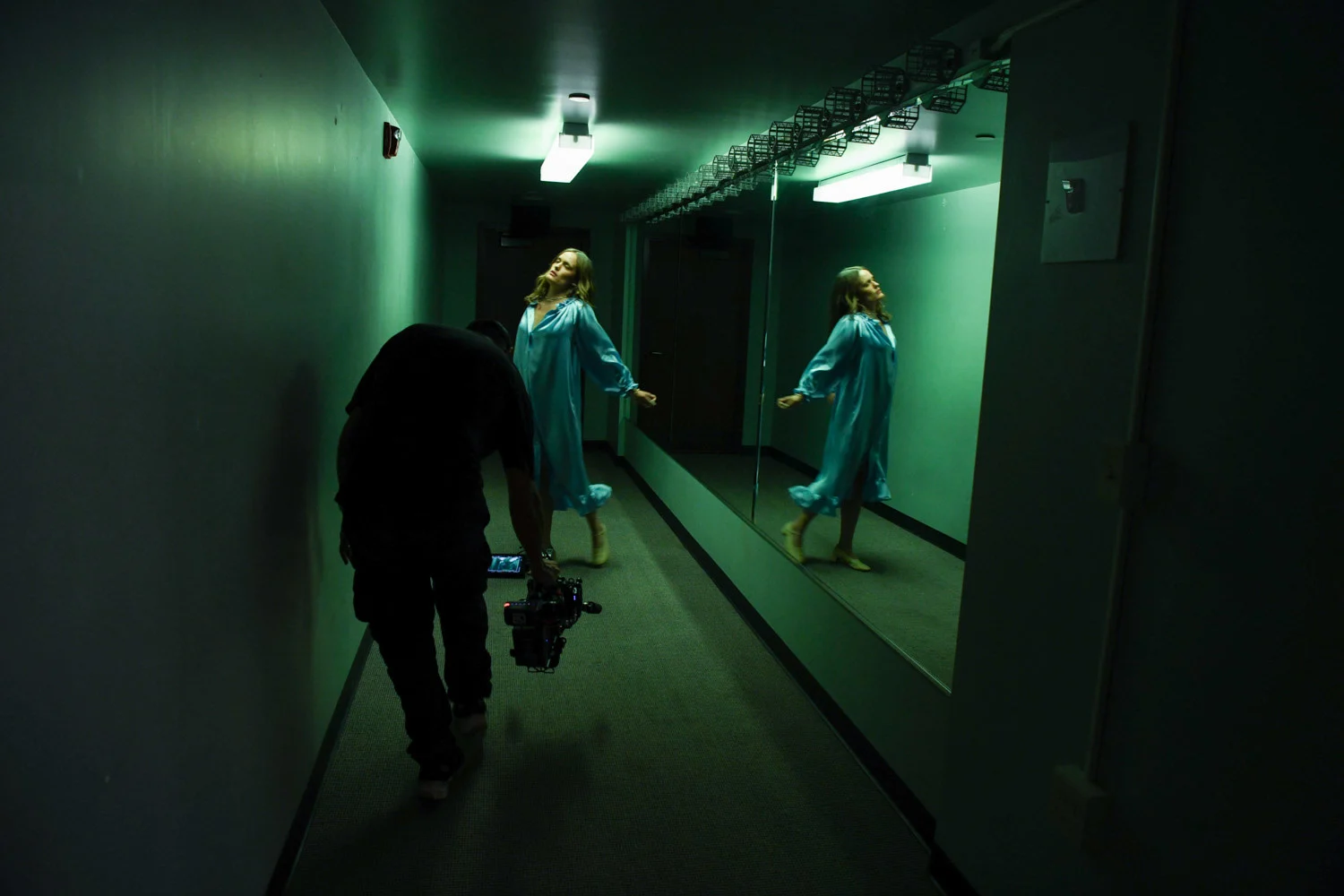
Kelly, you sent me a lovely note about how you first came across Gia’s work via Palo Alto, saying there was “something so specific, suburban, and nostalgic” about that film that made you feel both melancholic and excited. Eventually, you just ended up dropping into Gia’s DMs, is that right?
Kelly Zutrau: Yes! It’s always scary to cold DM someone, but we have a bunch of mutual friends, and she had also worked with Dev Hynes, who’s a friend of mine. I felt like there was a 50 percent chance she would want to meet—good odds!
Gia Coppola: I was so stoked when I saw that because I’m such a fan of Kelly’s. So I was really excited. And then we went on a little date.
KZ: Yeah, you took me to Musso & Frank which is, like, this legendary place that I had never been to. Your Uncle Roman [Coppola] also happened to be sitting there eating with his partner, too. It was a very special moment of being part of the L.A. movie world for an hour, hanging out with Gia. Very romantic, and just cool.
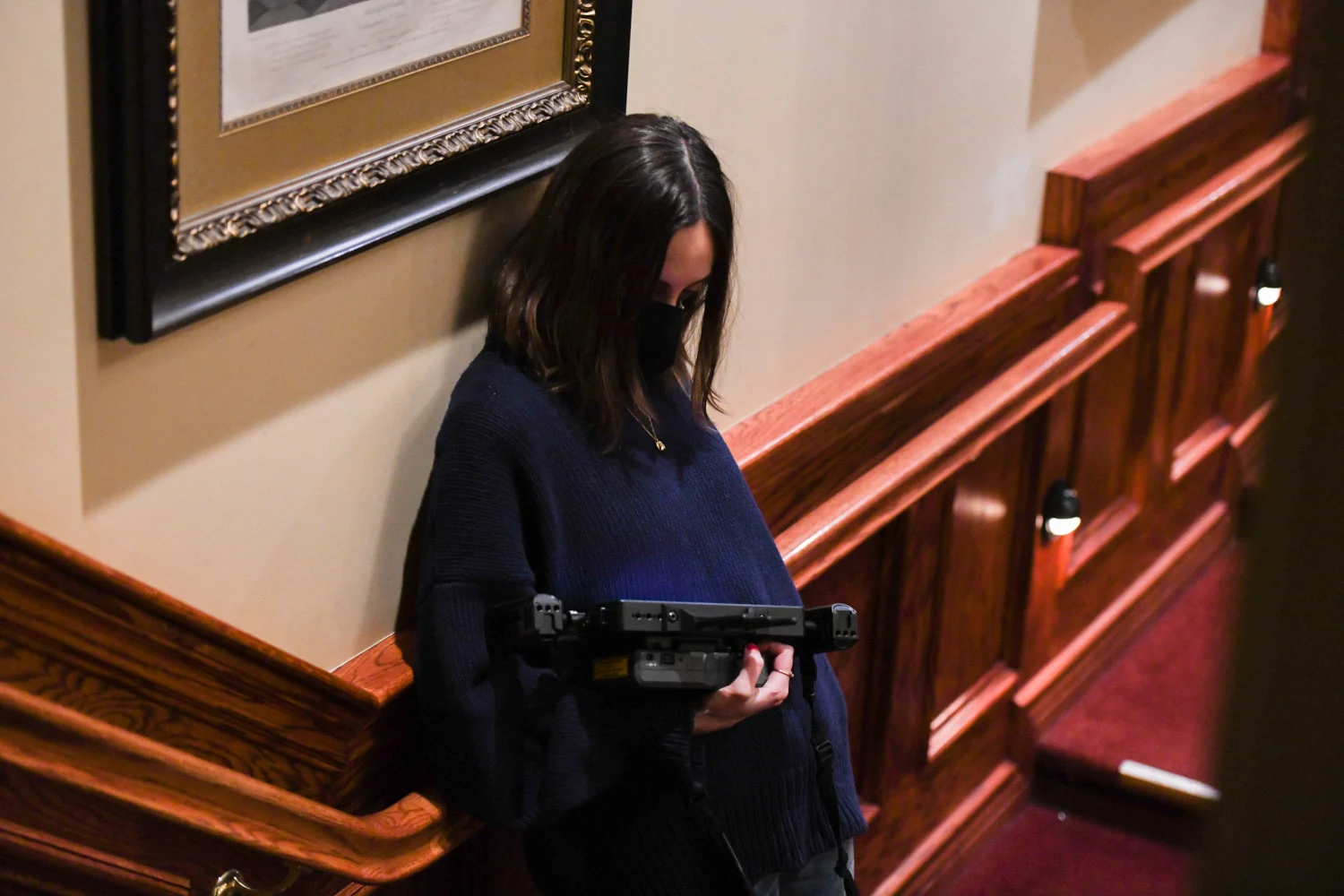
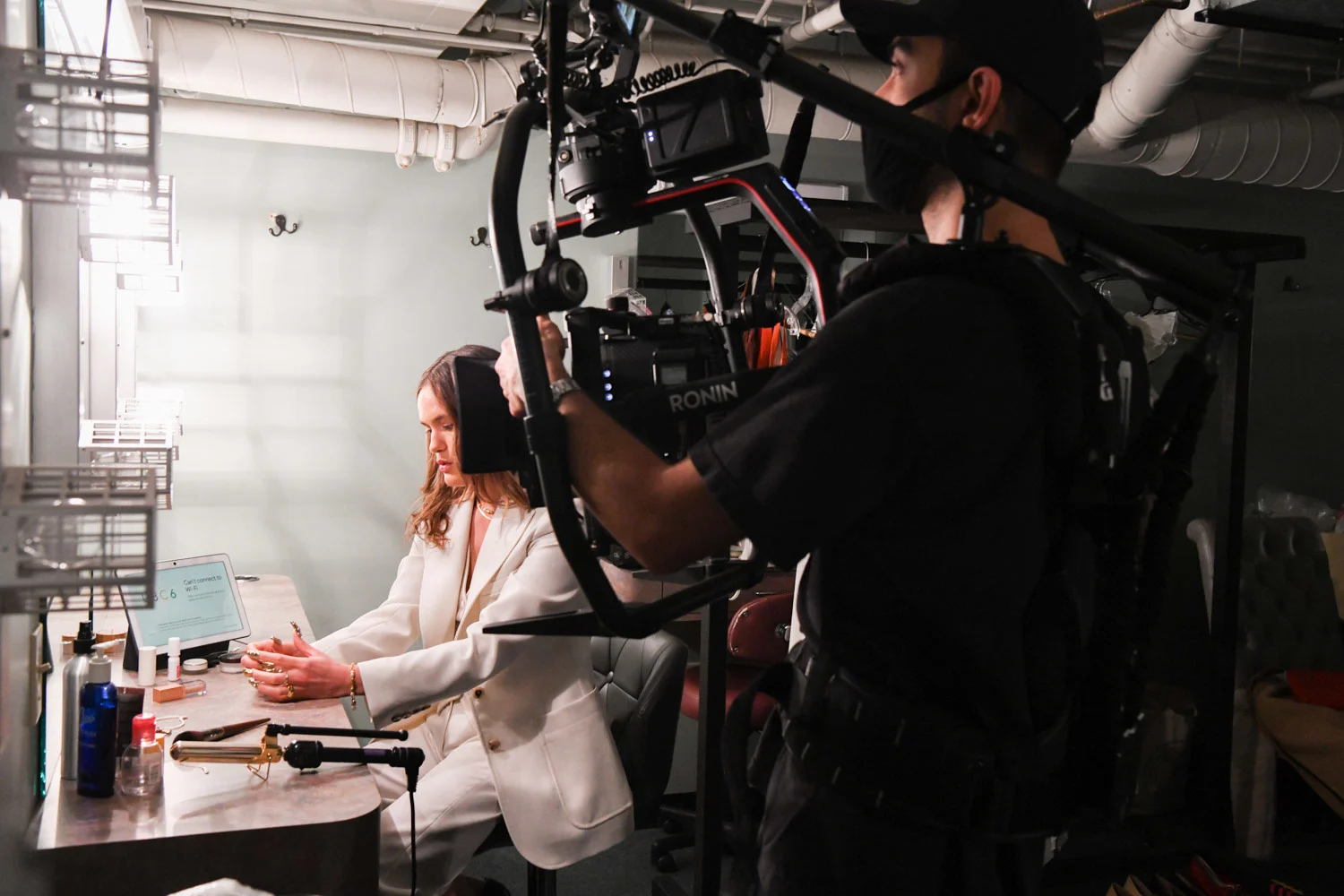
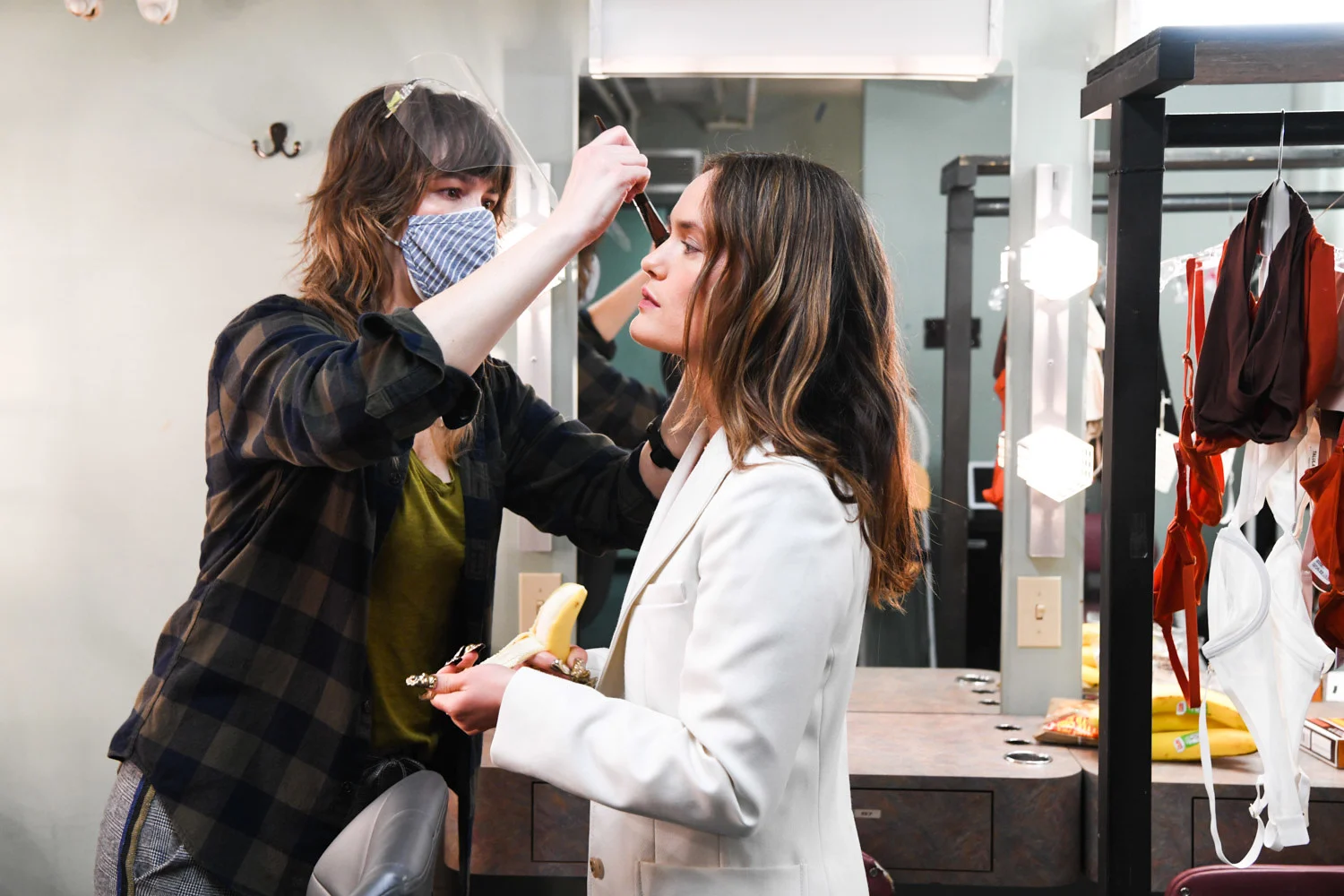
GC: Yeah, I love it there. It’s one of the oldest restaurants in L.A.: there’s just so much history and it hasn’t changed much [over the years]. Raymond Chandler and F. Scott Fitzgerald used to go there, and all the waiters still wear the same uniform.
KZ: I feel like L.A. does that better than any other city—giving the feeling of stepping into another time. We met in March 2020, right before the pandemic, and then everything shut down days later. So our collaboration became slightly prolonged, but we kept trying to be flexible and figure out how we could be creative during that time. The concept kept changing, which was actually really interesting.
GC: It was cool because we shot it almost exactly a year to the day that we began talking about it. It’s so interesting to look back on the journey and see how it came full circle. What we initially talked about is exactly what we made, even though we were trying to mold it [around] the circumstances.
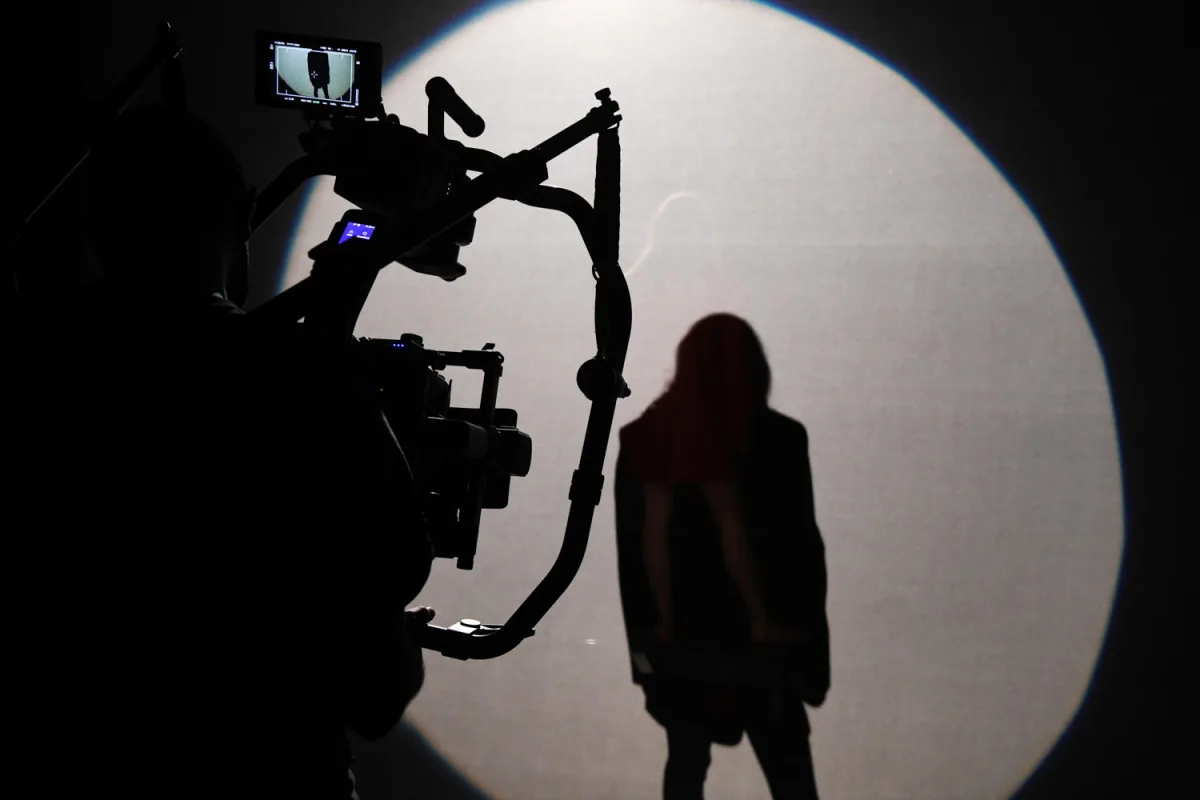

When a collaboration has that long, virtual gestation period, it can be tempting to overload on visual references. But watching Larabar, it feels like you really boiled things down to the essentials of an idea of performance—both as an artist on stage, and as a woman maybe.
Was this concept a kind of fantasy of performance stemming from a year where performing hasn’t been possible?
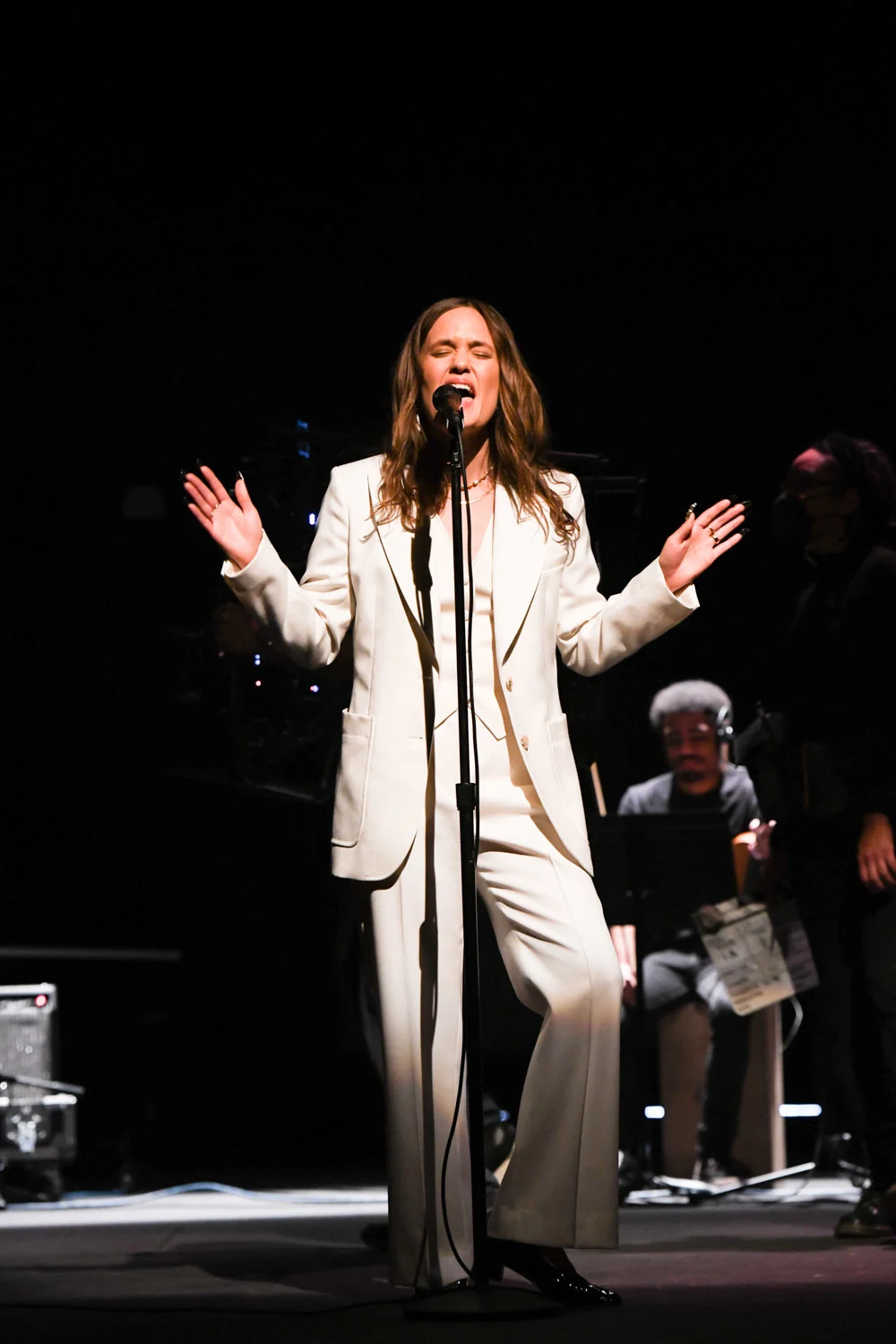
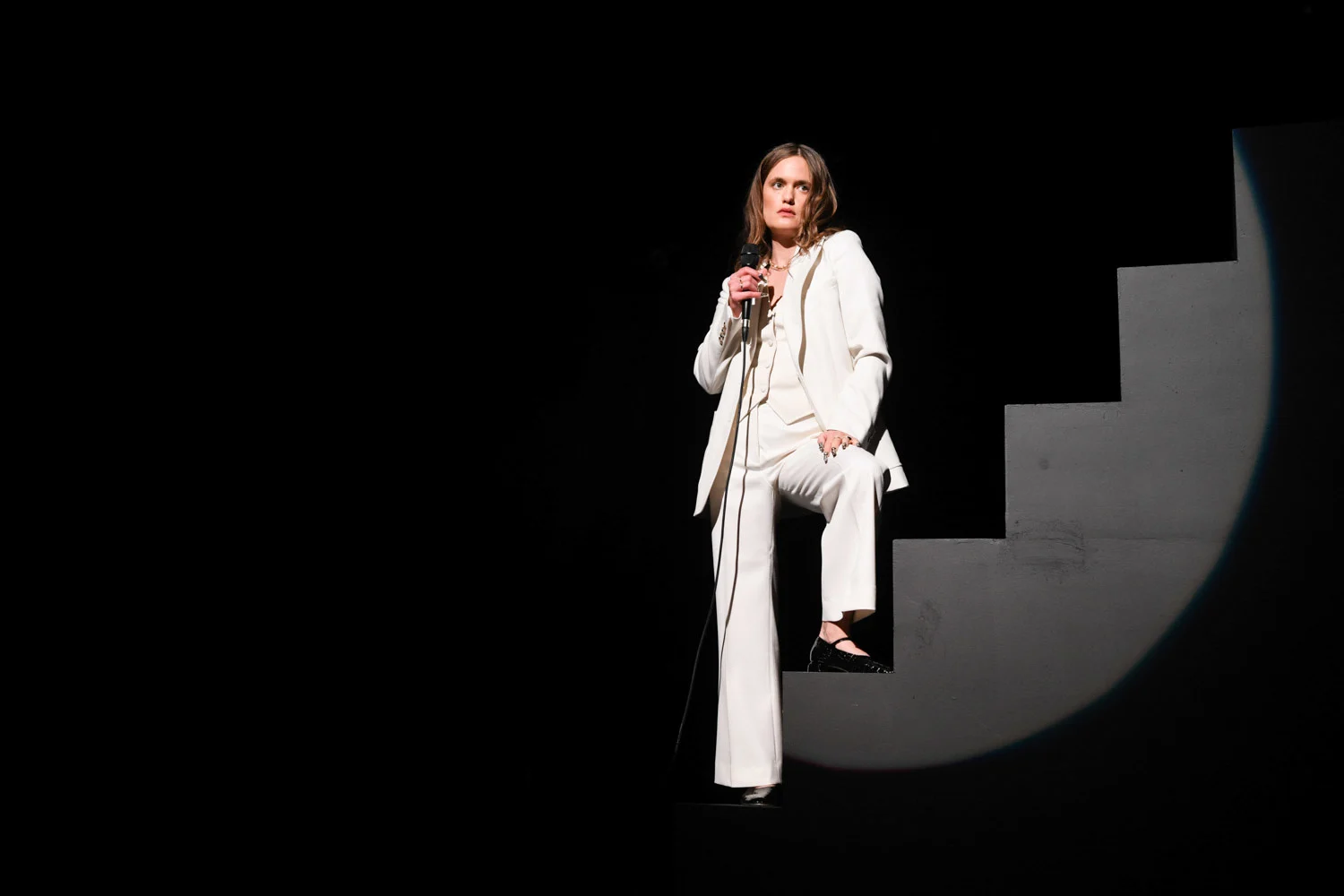
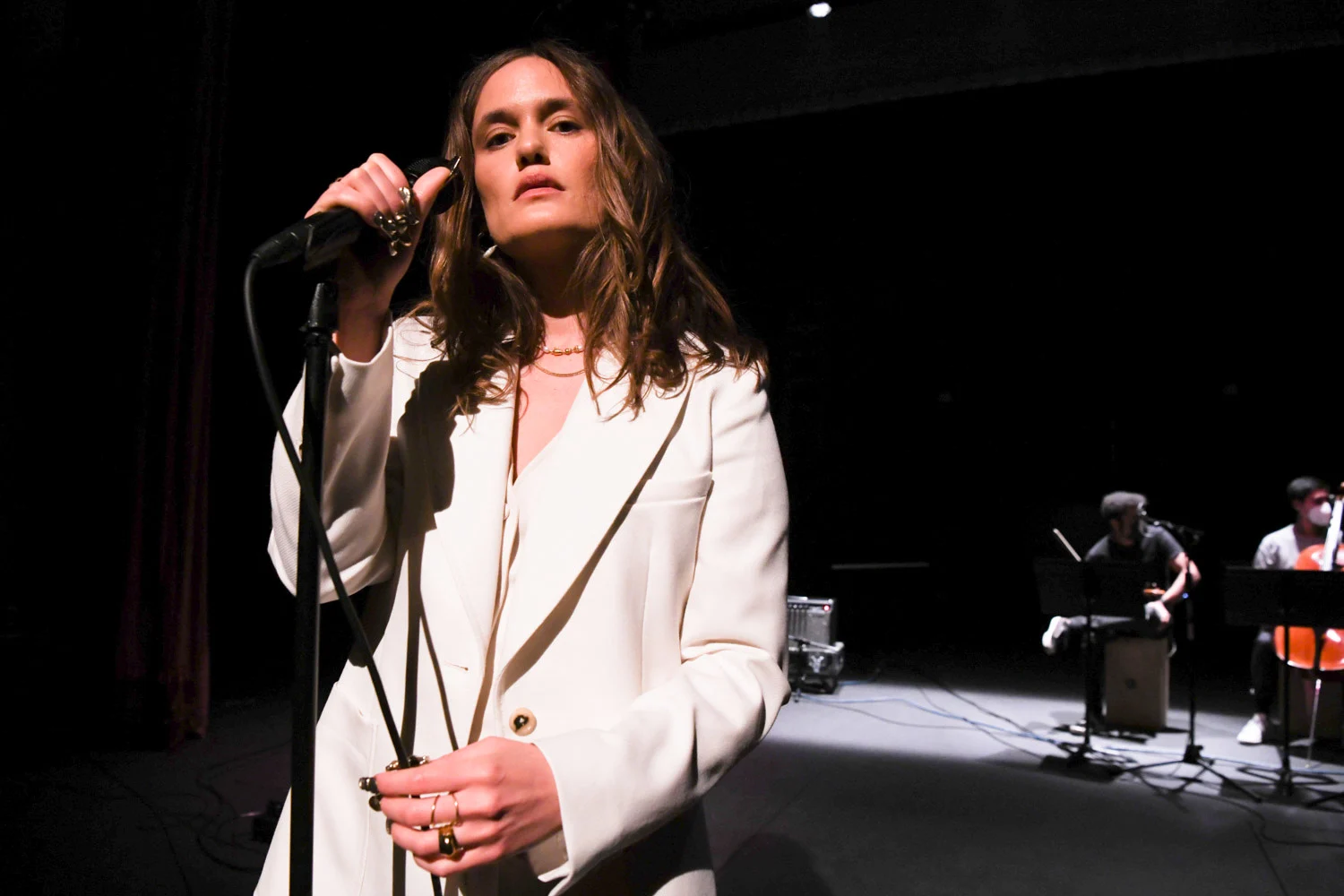
What were some of those other performances you were thinking about?
GC: We watched the twigs video, for cellophane.
KZ: And the Nick Cave documentary [One More Time with Feeling]. That was huge, I had never seen it. It’s a mixture of documentary and live performance in the studio. It’s really dramatically lit and very emotional—I was just crying while I was watching it. I think that influenced the color palette, and the live element: having the band, and the strings. A feeling that there’s something really at stake here. That’s the part of live performance that I find so interesting—like, are they going to make a mistake?
GC: I spent quarantine with my family in Napa Valley, thrown together with a ton of little kids who were obsessed with TikTok dance routines. I thought, maybe there’s a way to make something really beautiful and graceful with this. It was fun to challenge [Kelly] to try something out of the box.
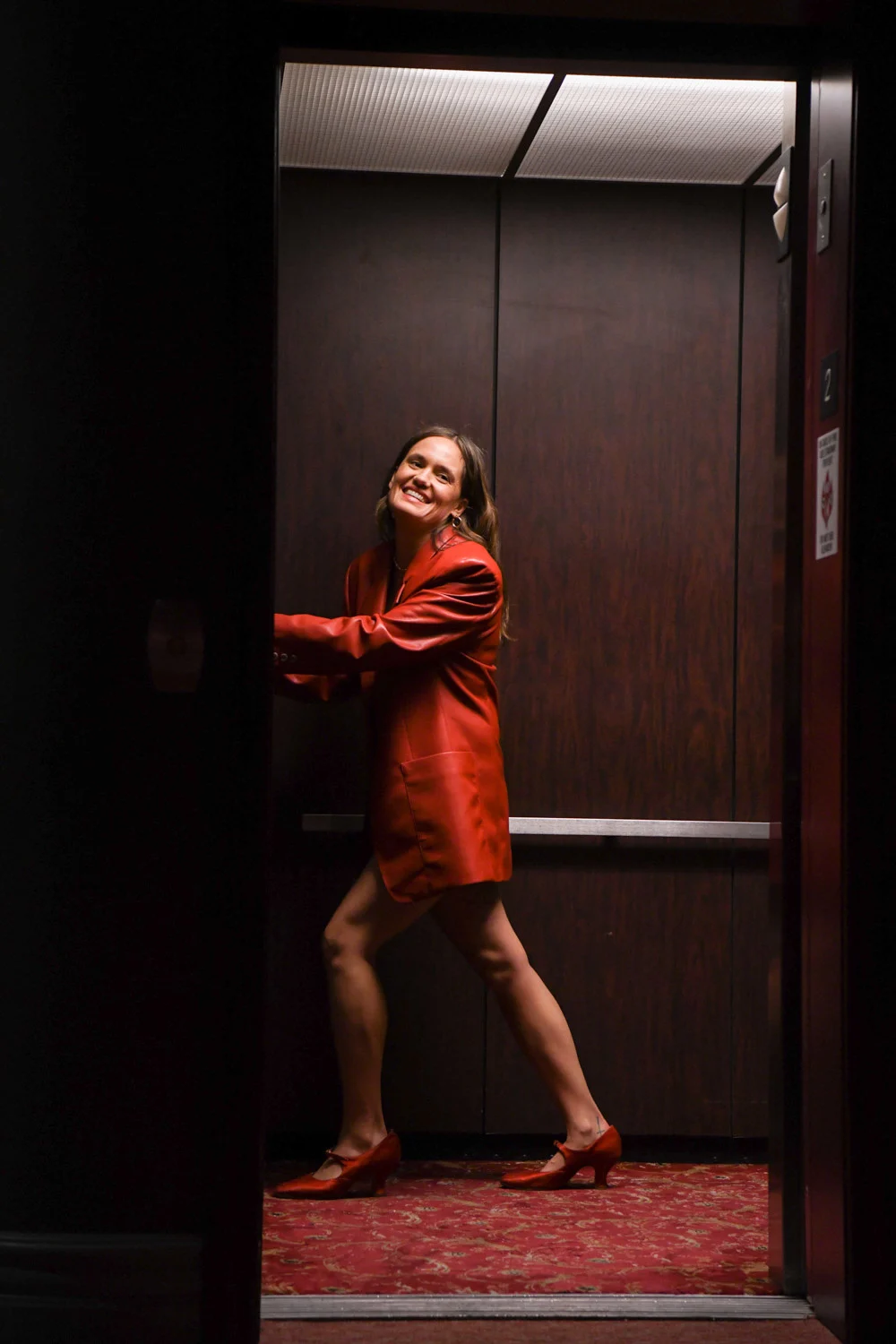
I love that. What you’ve made here is something very classical-feeling, but there is a lot of beautiful movement on TikTok—like ballet dancers, or roller skaters. How did you marry those energies in this project?
GC: I love classical movies and literature, but I’m also so fascinated by pop culture and I’ve [always] tried to find a way to blend the two worlds together. Music videos can be so overly stylized, or try to fit in entire storylines. My personal preference is like the Nick Cave example, where you’re really getting to be with the artists—to experience their music and feel it. Larabar stemmed from that feeling of wanting to kind of keep it simple, but also feeling inspired by what my cousins were doing and trying to challenge that. You know, those moves were so kind of bizarre to me, they’re always walking around doing these weird hand gestures, but there’s something interesting in trying to incorporate that into being graceful. Re-applying it to Kelly, there was a freeness to it, and a tangibility that I like.
KZ: Towards the end of the video, you can see some of the more grandiose movements—that was me on stage, and Gia shouting, “Now jump, jump in the air, now kick out, go up the ladder!” Also Turner, the stylist, was amazing. She put me in these clothes that really made me feel like I was in character.
GC: The styling brought so much to the table that I wasn’t expecting, because then it morphed into this other concept of taking on something of the movie The Red Shoes, or All That Jazz. When I saw that afterwards in the edit room I was like, whoa, this is really taking on that kind of vibe.
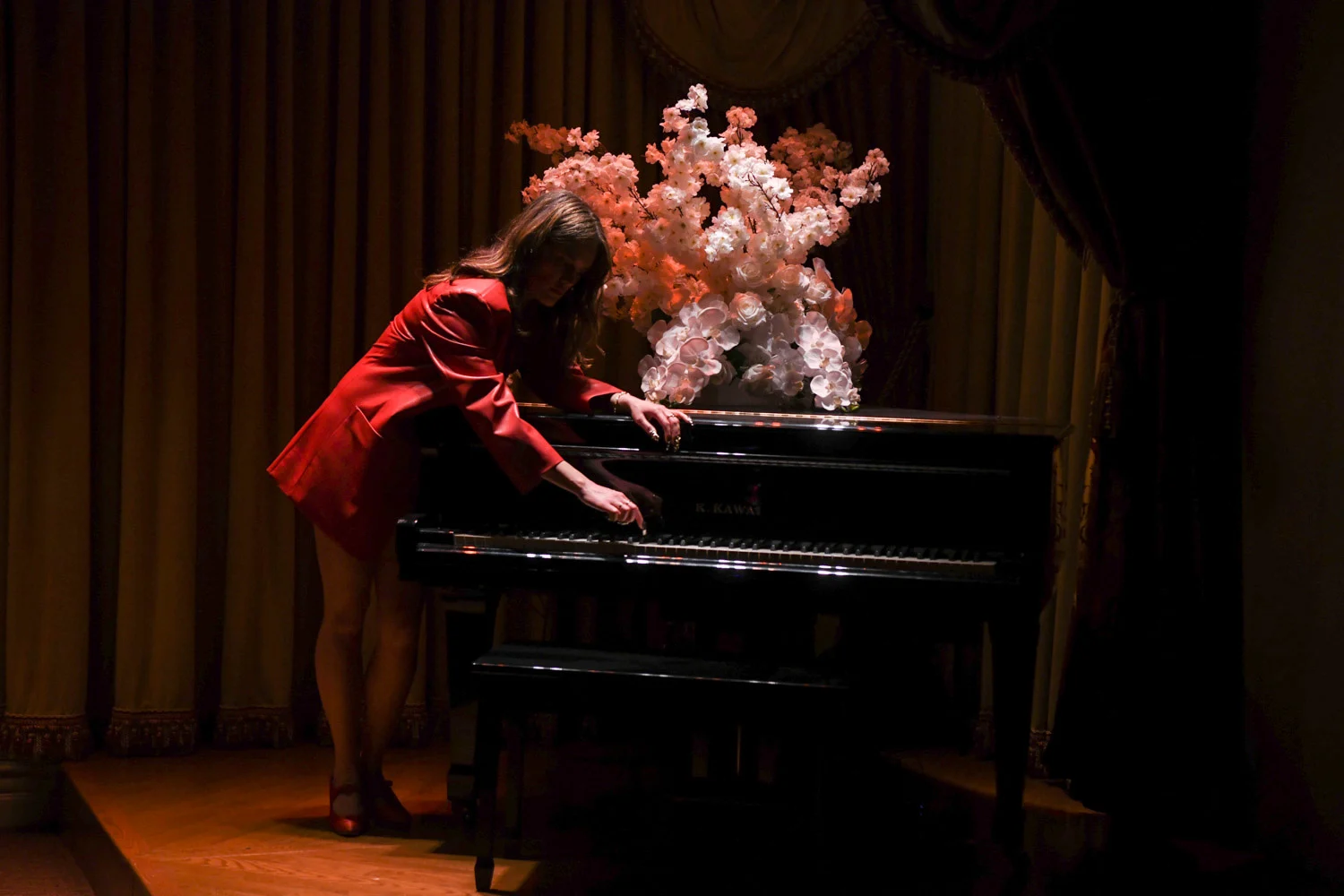
When you can play live shows again, Kelly, do you think that you might bring in something of this new character?
2021 is certainly an interesting time to be releasing anything. How does it feel to have projects come out that people have been anticipating for so, so long?

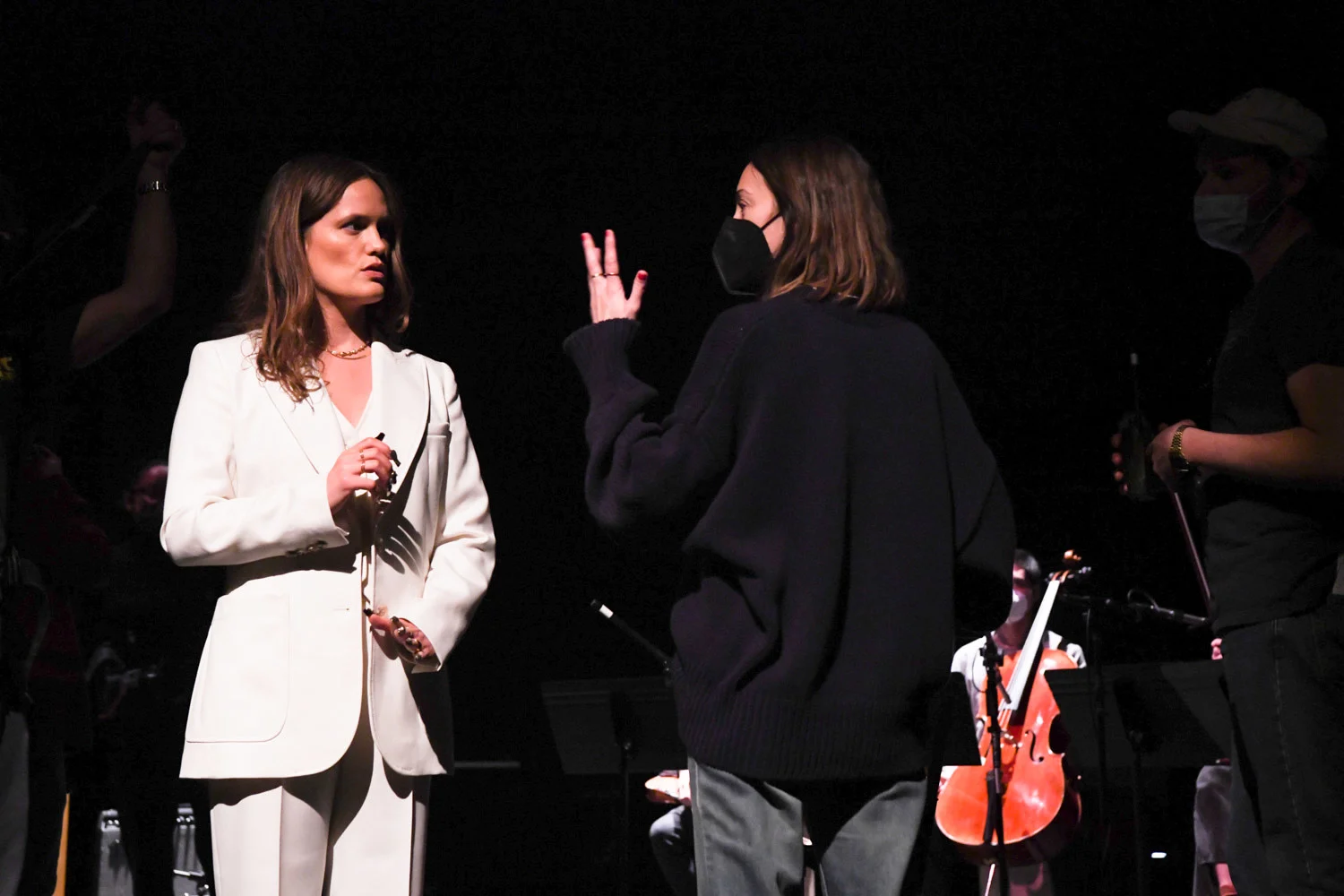
Shockingly, I have maybe worked with a woman director only once out of like 20 other video projects.
If there was a book that you would lend one another to take a break from your phones right now, what would that be?
KZ: Well, I just finished a book that I have read twice already. The White Album by Joan Didion. It’s just a classic. All these essays about the 1970s, her experience of New York, and California—beautiful, and really sad at the same time.
GC: Oh, I love Joan Didion. I had a phase of like, I just want to be her.
KZ: And she was so connected to directors and the film world. She wrote a lot of screenplays.
GC: She depicts L.A. perfectly. What would I give you? I feel like I haven’t been reading as much as I’ve been stuck with research stuff. But I have this book by my bedside that my dad gave my mom—Letters to a Young Poet by [Rainer Maria] Rilke. I just flick through that every couple of days and get inspired. I like when things feel simple. Even in conversation when people start using big words, I don’t like it. If things are simplified, it's more engaging. And simple words are prettier.
Speaking of which—why “Larabar”?
KZ: Potentially the most unpretentious title of all time: a breakfast bar [laughs]. The producer I was working with and I were in the studio all night, trying to finish this song on a deadline. Literally we were just drinking coffee and eating Larabars. That was the working title for a while, and then I tried to change the title a bunch of times. Eventually, “Larabar” took on a new meaning for me and just felt like this beautiful, made-up word.
